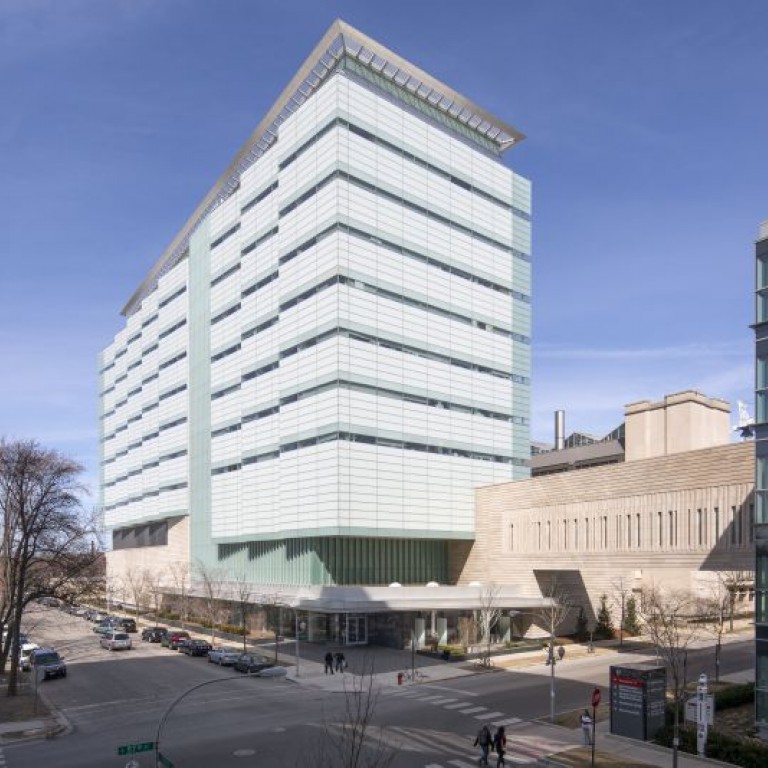The Phoenix Curriculum, a revised educational framework at the University of Chicago Pritzker School of Medicine, is designed to empower students to serve as patient advocates, incorporating self-directed learning, research, clinical experience and community engagement from day one.
Current first-year Pritzker students are the first to follow the new curriculum — the medical school’s most significant update in 15 years.
“Though we have made continuous quality improvements over the years, this is a major overhaul of the curriculum,” said Jeanne Farnan, MD’02, MHPE, Professor of Medicine and Associate Dean for Undergraduate Medical Education.
The name was selected to symbolize rebirth following the COVID-19 pandemic and to pay homage to the University of Chicago’s coat of arms, a shield displaying a phoenix.
This story appeared in Medicine on the Midway magazine. Read the Spring 2024 issue here.
Development of the Phoenix Curriculum began in 2021, when Pritzker leadership sent a needs assessment to students, staff, alumni and patients. Working in small groups to review the responses — as well as ongoing objectives and national benchmarks — the medical school’s education team identified growth areas rooted in the school’s core values, notably health equity and scholarship.
The result: a model focused on holistic development and shared collaboration.
“We see our students graduating with not only the strong foundation in biomedical science and clinical experience needed to become good doctors, but also the communications skills and adaptability to embrace advances in healthcare and become leaders in their field,” said Jason Poston, MD’02, Associate Professor of Medicine and Assistant Dean for Medical School Education. “We also think it will be a great recruitment tool.”
More time to observe, explore
Robust and early exposure to the clinical environment is central to the Phoenix Curriculum. Previously at Pritzker, two years of coursework were required before two years of clerkships.
“We recognized that students were coming in with a lot of biomedical knowledge and that they hungered for earlier exposure to the clinical environment,” Poston said.
Pritzker students now participate in a yearlong ambulatory and inpatient preceptorship that introduces them to healthcare settings and nonphysician staff within the first 18 months. Students also can participate in an optional Pritzker Morning Report, modeled after the morning reports held during residency, to analyze a real-world case.
Under the new curriculum, second-year Pritzker students enter their clerkships earlier — in March instead of June — and they have longer core clinical rotations, including a new four-week ambulatory clerkship that combines outpatient care in internal medicine and family medicine. Time is allotted both during and after rotations for electives and career exploration.
An outline of the Phoenix Curriculum calendar (click here to download a full-size PDF).
Pritzker’s education team condensed or reworked courses to accomplish this. They identified areas of overlap, such as in the legacy curriculum’s Cell Pathology and Immunology course and Microbiology course, respectively, and merged them into a single Host Defense and Invasion course taught by both instructors.
“We were very conscious of respecting our students’ time and not simply cramming the same amount of information into a shorter time frame,” Poston said. “We also wanted them to grow outside of the formal curriculum by giving them time to pursue other interests.”
The pandemic showed administrators that passive learning strategies such as lectures didn’t engage students, Farnan said, which led Phoenix Curriculum planners to incorporate more team-based learning in small groups — an approach linked to higher test scores.
In the Methods of Inquiry course, for example, students first review a scientific paper and answer questions about it on their own. Then, they get together with their team to discuss and refine answers before submitting them as a group.
A focus on health equity and scholarship
The needs assessment survey also revealed strong support for expanding health equity education.
As a result, the Phoenix Curriculum prioritizes health equity as a longitudinal thread throughout the first three years — including a dedicated first-year health equity course plus foundational courses and clerkships that incorporate patient advocacy and healthcare disparities discussions.
“Our hope is that this will allow our students to become even more committed and prepared to address this huge challenge in healthcare,” said Adam Eickmeyer, MPH, Director of Medical School Education.
There is also a continued focus on scientific examination. Through Pritzker’s Scholarship and Discovery program, every student participates in a four-year mentored research program. Ninety percent have published in a peer-reviewed journal by graduation, while 96 percent have authored an abstract or poster.
This distinguishes Pritzker graduates from their peers, said Farnan, noting that fewer than 80 percent of medical students nationally conduct mentored research.
“Other schools have reduced or removed their scholarship component, but we felt that maintaining it was core to our UChicago identity,” Farnan said. “It also gives our students an edge when it comes to the residency application process.”
To measure the success of the Phoenix Curriculum and guide modifications, the medical school has developed multiple avenues for soliciting feedback. It will also track students’ performance on internal and standardized exams, as well as their clinical performance.
So far, the reception has been positive. “Students have told us that they really like the small group learning and appreciate that we’ve moved the clinical skills curriculum much earlier in their training,” Eickmeyer said.



